#Egyptian deities
Explore tagged Tumblr posts
Text

Alméry Lobel-Riche (1877–1950) - The Sun of Death, 1922
#alméry lobel riche#the sun of death#dark femininity#egyptian deities#symbolism#impressionism#decadent movement#dark art#horror art#art#illustration#etching
4K notes
·
View notes
Text
Footage of the Giza Pyramid Complex Being Built in Egypt c. 2600 – c. 2500 BC.
An archaeologist has found ancient film in a hidden vault under the great pyramid of Giza.
This explains everything! 😉
#Egypt#Great Pyramid of Giza#Footage of the Giza Pyramid Complex Being Built in Egypt#c. 2600 – c. 2500 BC.#ancient artifacts#archeology#archeolgst#history#history news#ancient history#ancient culture#ancient civilizations#ancient agypt#egyptian history#egyptian mythology#egyptian gods#egyptian deities
219 notes
·
View notes
Text
Pagan syncretism is the best. I love being able to worship whomever, whenever. I love being able to study occultism from around the world and put together a practice that is so unique and special to me. I love being able to worship gods from ancient societies like Greece. I love the even more ancient gods from Egypt. And we can go back further and revive the gods from Sumer! I love honoring spirits of the sun, and moon, of death, and love. I love being playful with the faeries, soaring with dragons, and meditating with bodhisattvas. If it is open to me, I am willing to learn and boy has it enriched my life tenfold! I don’t ever want to stop!
#pagan#paganism#hellenic deities#hellenic devotion#polytheism#omnism#animism#syncretism#dragons#faeries#faery witch#faerie#fae folk#bodhisattva#meditation#mesopotamian deities#kemetic#egyptian deities#greek gods#shinto#buddah
393 notes
·
View notes
Text
am i the only one who thinks about the fact gods are in their home? like, what do you mean gods visit me? they look at my room, my bed, my clothes, the mess that i make on my couch with all my plushies and clothes, random bras and socks that i didn’t like thrown around…and my parent’s bedroom and all their shiny jewels and cute sculptures, the living room and its coziness, the kitchen and its persistent smell of homecooked food? do they like it? what do they think? in the end, it’s just like when a important person visits you. you can’t do anything but hope it is cosy for them.
#paganism#paganblr#pagan witch#witchcraft#witchblr#deity work#deity worship#greek deities#helpol#egyptian deities#kemetic#norse paganism#norse gods#norse mythology
287 notes
·
View notes
Text
BASTET
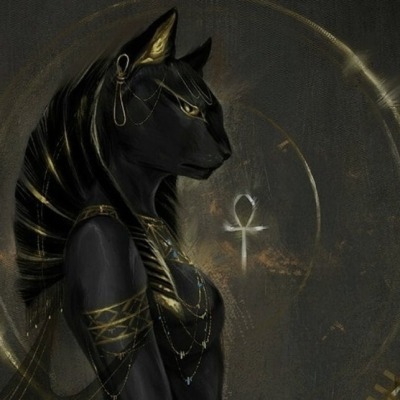
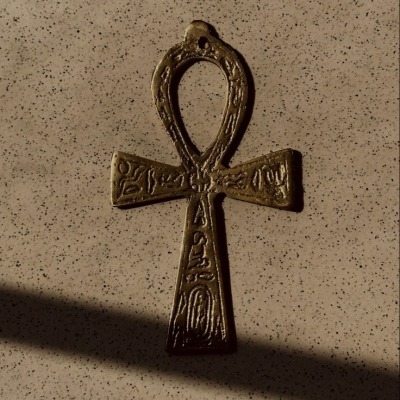
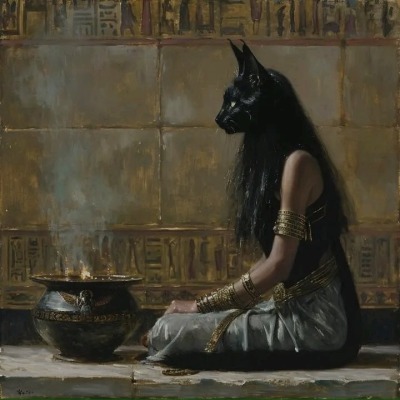
WHO IS SHE?
Bastet, also called Bast, Ubasti, and Bubastis, is a goddess often represented as a lioness or a cat. She was a protective goddess associated with home, domesticity, women’s secrets, cats, fertility, childbirth, marriage, music, magic, sex, prosperity, joy, dance, healing, and pleasure. She is often invoked for protection against evil and misfortune. Bastet was also known as a goddess of joy, music, dance, and perfume, and is often depicted holding or playing musical instruments, such as the sistrum and the lute. She is also closely associated with the goddesses Sekhmet and Mut, which both of whom are depicted as lionesses.
BASIC INFO:
Appearance: Bastet is often depicted as a woman with the head of a cat or a lioness, sometimes holding a sistrum or a basket of perfumes. Her body is typically portrayed as being covered in spots, like a leopard. She is often depicted wearing a wig adorned with a vulture headdress and a necklace with a golden pendant. In some depictions, she is also shown riding in a chariot pulled by lions, and in others, she was shown as a mother nursing her kittens.
Personality: she is known as a kind and gentle goddess who was particularly devoted to her followers and their well-being. She was seen as a protective deity who watched over homes and families, and was often invoked to protect against evil and misfortune. She was also known as a goddess of joyous celebration and music, and was often invoked to bring happiness and prosperity to her devotees. She was often depicted as a protector of women and children, and was known to be a motherly and nurturing goddess.
Symbols: basket, Ankh, the Sun and Moon, perfume jar, sistrum ointment, solar disk, cats, and lions
Goddess of: home, domesticity, women’s secrets, cats, fertility, childbirth, marriage, music, magic, sex, prosperity, joy, dance, healing, and pleasure
Culture: Egyptian
Plants and trees: catnip, vervain, cannabis, lotus flower, cinnamon, mint, and sandalwood
Crystals: cats eye aquamarine, jasper, graphite, xenotime, black tourmaline, pyrite, lapis lazuli, sunstone, moonstone, mangano calcite, tiger’s eye, morganite, and shungite
Animals: cats, lions, cheetahs, leopards, and other felines
Incense: kyphi, rose, cinnamon, mint, and sandalwood
Practices: home protection, feline magick, fertility, sex magick, healing, love magick, personal growth, dance magick, pregnancy rituals, and music magick
Colours: malachite green, black, red, bronze, pink, turquoise, and gold
Numbers: 7 and 9
Zodiacs: Leo and Cancer
Tarot: The Chariot, Strength, and The Sun
Planets: Sun and Moon
Days: Sunday, Monday, Bubastis, and Mabon
Parents: Ra and Isis
Siblings: Horus and Anhur (half brothers)
Partner: Ptah
Children: Maahes
MISC:
Cats: they were believed to be the embodiment of the goddess Bastet, and as such, were considered to be holy creatures. Cats were also seen as symbols of grace, elegance, and fertility, all of which were qualities associated with Bastet. Additionally, cats were also seen as protectors of homes and families, which was one of Bastet's main roles as a protective deity.
Sun and moon: Bastet was sometimes associated with the sun and the moon because she was believed to have a connection to the heavens and the celestial bodies. She was considered a protector of the sun, and was believed to accompany Ra, the god of the sun, on his journey across the sky each day. She was also closely associated with the goddess Isis, who was often depicted holding a sistrum or a lunar disc, symbolizing the moon. Additionally, she was also sometimes depicted as the protector of the nighttime, and was thought to be responsible for bringing light into the darkness.
Ankh: the ankh, which is a hieroglyphic symbol that represents life, was often depicted in association with the goddess Bastet because she was considered a protector of life and fertility. The ankh was believed to have powers that could bestow life and fertility upon those who wore it or had it in their possession. It was also said to protect the wearer from death and evil. As a deity associated with these qualities, Bastet was often depicted with the ankh as a symbol of her protective powers and association with life and fertility.
Basket: she is often depicted holding a basket, which is believed to represent her role as a protective deity. The basket was used to carry items that were believed to have protective properties, such as sacred oils or other sacred items. The basket was also seen as a receptacle for offerings and gifts to the goddess, and was believed to represent the abundance and prosperity that she brought to her followers. In some depictions, the basket is also shown as overflowing with grain, representing her association with fertility and plenty.
Cannabis: in some interpretations, cannabis is seen as having a connection to the goddess Bastet because of its association with female fertility and goddess worship. Cannabis has been associated with many goddesses throughout history, as it was believed to be a sacred plant with spiritual and medicinal properties. Some believe that Bastet was associated with cannabis as a symbol of her protection and power over fertility and abundance, and as a means of connecting with the divine feminine. Other interpretations suggest that cannabis may have been used in ancient rituals and ceremonies dedicated to Bastet as a means of enhancing spiritual connection and achieving altered states of consciousness.
Perfume jar: Bastet was often depicted holding a perfume jar or a container of perfumed oil, which is believed to represent her association with perfumes and fragrances. The scent of fragrances was believed to have powerful properties that could purify the air and drive away evil spirits. The perfumes associated with Bastet were often said to have a floral, musky, or sweet scent, and were believed to have regenerative and protective properties. In addition to their protective qualities, perfumes were also seen as symbols of luxury and wealth, which may explain why they were often associated with the goddess Bastet.
FACTS ABOUT BASTET:
Bastet was worshiped in Bubastis in the Nile River delta and Memphis. Large cemeteries of mummified cats and bronze statuettes of Bastet were created at these sites.
Her name was originally B'sst, which later became Ubaste, then Bast, and finally Bastet. The meaning of her name is not known for certain, but some claim it means "She of the Ointment Jar".
According to Egyptian mythology, the circumstances of Bastet's death are a mystery, but many scholars believe she died while protecting her family.
Many Egyptians saw her feline attributes as all-powerful, with the ability to protect their homes from evil spirits and disease, much in the way cats could ward off vermin.
She works as a psychopomp, a person who leads the deceased to the next life.
Bastet, who was in charge of looking after the dead and the spirit world, was also in charge of destroying the bodies of the deceased who managed to escape from Ma’at’s judgment chamber. In addition, she directed the spirits to the afterlife World. She cared for the deceased and prevented them from fleeing their punishment.
Anyone who damages, kills, or is cruel to cats will suffer the wrath of Bastet and her devotees. Egyptians were so devoted to Bastet and their pet cats that when one died, the cats were also mummified and joined Bastet in The After World.
HOW TO INVOKE BASTET:
Light a candle and place it in front of an image or statue of Bastet, offerings of fresh flowers, especially lotus and roses, and which are associated with Bastet, burn incense, such as kyphi, rose, cinnamon, mint, or sandalwood, which are believed to be scents that Bastet enjoys, speak prayers or affirmations to Bastet, asking for her guidance and protection, and create a small shrine or altar dedicated to Bastet, with items that symbolize her qualities of protection and fertility.
PRAYER FOR BASTET:
Mother of the Gods, the One, the Only,
Mistress of the Crowns, You rule all.
Bastet, Beloved, when Your people call
Daughter of the Sun, with flame and fury,
Flashing from the prow upon the foe;
Safely sails the boat with Your protection
Passing scatheless where Your fires glow.
Daughter of the Sun, the burial chamber
Lies in the darkness ‘til Your light appears.
From Your Throne of Silence send us comfort,
Bastet, beloved, banish all our fears.
Mother of the Gods,
No gods existed ‘til You came there and gave them life.
Trampling down all evil and all strife.
Mother of the Gods, the Great, the Loved One,
Winged and Mighty, unto You we call,
Naming You the Comforter, the Ruler,
Bastet, beloved, Mother of us all.
SIGNS THAT BASTET IS CALLING YOU:
The presence of cats, seeing them in pictures, on television, being followed by cats, and even hearing meowing can be signs.
Seeing images or visions of her in your dreams or while meditating.
Feeling a sense of protection or comfort in her presence.
You experience a sudden or unusual interest in ancient Egyptian mythology or spirituality.
Feeling a sense of joy or celebration when thinking about or engaging in activities associated with her.
A strong connection to the themes of protection, fertility, and abundance in your life, or experience a sudden increase in energy or creativity. It's important to pay attention to your own intuition and feelings when interpreting these signs and signals.
Finding small items associated with the goddess in unexpected places or experiencing a sense of connection to the moon or the night.
Feeling a sudden or unusual attraction to the colour gold.
Experiencing a sudden or unusual interest in perfume or scents.
You begin to experience an increase in your creativity and artistic abilities.
A sudden or unusual urge to protect or care for others.
You experience a sudden or unusual attraction to the arts, music, or other forms of self-expression.
OFFERINGS:
Perfume.
Salves and body scrubs.
Jewelry and other shiny precious to semi precious objects.
Gold items.
Food and drinks: chocolate, sugar water, pastries, beer, garlic, onions, meat (especially chicken and fish), honey, soda, milk, bread, tea, water, fruit/fruit juices, red wine, grains, and lettuce.
Catnip and cannabis.
Lotus flower.
Baskets.
Crystals: cats eye aquamarine, jasper, graphite, xenotime, black tourmaline, pyrite, lapis lazuli, sunstone, moonstone, mangano calcite, tiger’s eye, morganite, and shungite.
Wind chimes.
Cat hair, claws, teeth, whiskers (please don’t cut a kitty’s precious whiskers, wait for them to shed naturally - look for them mostly during summer and on the places your cats spend most of their time).
Music.
Bird feathers (especially peacock).
Instruments, songs, music players, cds, and anything relating to music.
Dance related objects and imagery.
Incense: myrrh, jasmine, lavender, cannabis, and frankincense.
Sun catchers.
Bells.
Herbs: lemon balm, catnip, rose, jasmine, honeysuckle, and mint.
Lunar/sun images and items.
Art you’ve made of her.
Poems and literature.
DEVOTIONAL ACTS:
Love and respect cats, spend some quality time with them.
Protect your loved ones.
Stand up for what is right.
Explore your sexuality.
Do what you love, and love what you do.
Spend some time with your family, whether it be biological or chosen.
Include cats and cat effigies in your practice.
Use a cauldron to burn herbs as incense.
Learn more about Her, and her history.
Cleaning your house.
Donate to, volunteer at, or otherwise support cats at shelters.
Pray to her or write poems in her honour.
Research her.
Honour your mother or the mother figure(s) in your life.
Protect and fight for the innocent.
Dance!
Play music or create a playlist in honour of her
Learn about perfume and scented oils and how they were used and made in Ancient Egypt.
Take care of your home.
#fyp#fypシ#fypシ゚viral#fypage#fyppage#tumblr fyp#witchcraft#witch#witches#deity#deity work#bastet#egyptian deities#egyptian goddess#ancient egypt#information#helpful#masterlist#themortuarywitch
115 notes
·
View notes
Text

Goddess of Writing, Wisdom, Knowledge, Sciences, Accounting, Architecture, Astronomy, Astrology, Building, Mathematics, and Surveying.
Divine measurer, Scribe and Record Keeper of the Pharaoh.
The Inventor of Writing.
Mistress of the House of Books.
Mistress of Builders.
#deity worship#devotional#devotional post#kemetic polytheism#kemetic#kemetism#kemetic deity#seshat#wisdom#kemetic paganism#kemetic prayer#knowledge#writing#goddess worship#god worship#ancient kemet#egyptian gods#egyptian goddess#ancient egypt#egyptian deities#scribes#polytheistic#pagan polytheism#egyptian polytheism#pagan polytheist#pagan#lion#cheetah#omnist#pantheism
61 notes
·
View notes
Text
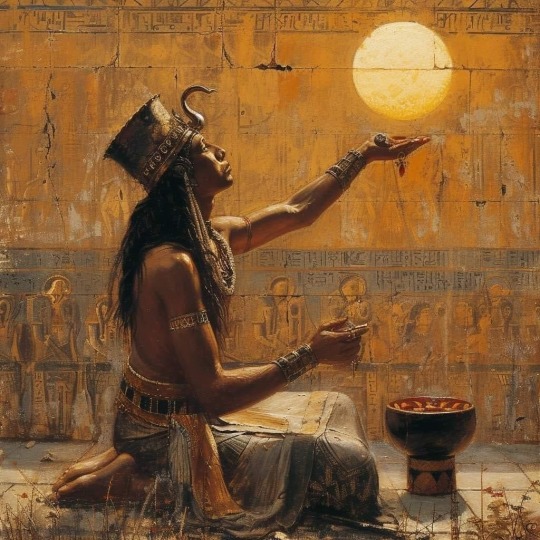
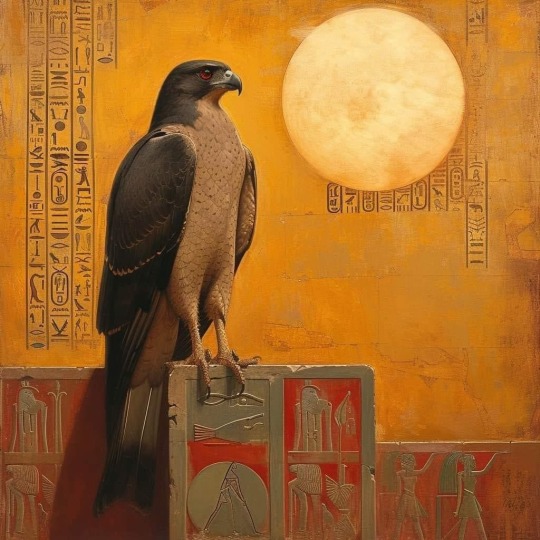


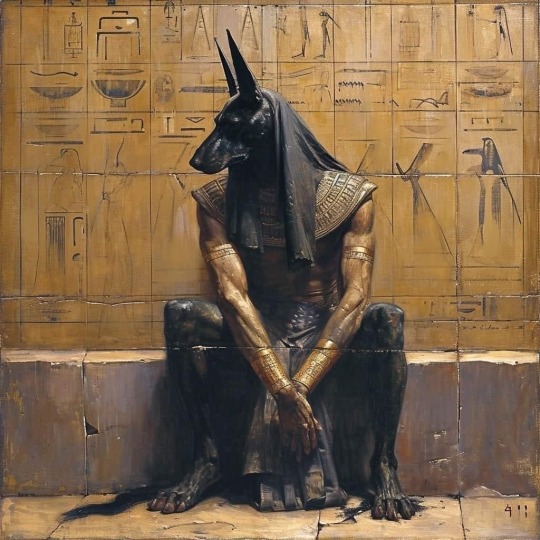

Ancient Egyptian Deities
366 notes
·
View notes
Text
Mythology Fact #1 - Sobek, Egyptian Crocodile God
NEW SERIES! Mythology Facts will explore many elements of world mythologies, but with a particular focus on Greek, Egyptian, and Norse, especially at the start.
Easily the winner of the first poll about this new series as held on my Patreon is Sobek, the ancient Egyptian crocodile-headed god!
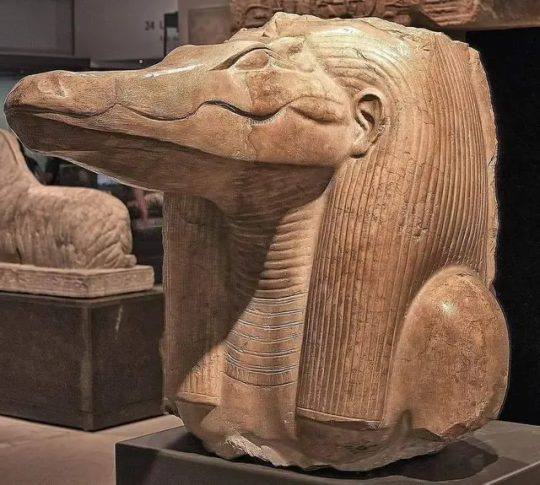
Head of a limestone statue of Sobek, as previously on display at the Met as part of a special collection; Met info on the statue head here
In ancient Egypt, like many ancient cultures, the most fearsome of beasts were highly regarded for their awe-inspiring endurance, power, and ferocity - a concept often little-understood today, as animals are now often seen as obstacles to be conquered or put out of the way, hence why it can occasionally be difficult to detail to the modern mind the relationship between men and wolves throughout history (but I'm not on that right now, so I'll stop). The people of ancient Egypt held great reverence for many animals, not least among them being the obviously very dangerous crocodile.
An integral part of life in ancient Egypt was the rise and fall of the Nile. Sobek was a centerpiece of the Nile life - crocodiles were abundant, a testament to their fertility and virility, and they were fearsome, strong, and enduring. Sobek's nature is intensely complex and his "domains," as we so often think of deities as having, were extensive, including but not limited to fertility, virility, illness, health, strength, pharonic power, military might, protection (especially protection from, essentially, bad luck), and the dangers and wonders of the Nile. By nature, he was considered animalistic, unpredictable, strong, protective but dangerous, and highly sexual, aspects frequently associated with the most powerful predators in a given region (notice all those things are also associated with wolves). Sobek was depicted variably as a crocodile and a crocodile-headed man, and holy crocodiles were kept in his name.
Given his association with the Nile and so many other things, Sobek was and mostly remained a very important figure, especially with his later fusion with/association with both Horus and Ra, two extremely important deities...
This is quite the lengthy post! More under the cut.
Among many other things, Sobek was said to have power of the fertility of the Nile's soil, as well as its waters, and thus also had great power over disease, as the Nile could also cause illnesses. Like so many ancient Egyptian deities, Sobek also had an association with the dead, being called upon to bring them sight and return their senses in the afterlife, as well as to assist in protecting them (along with many other deities, including but certainly not limited to Isis, Nephthys, and Anubis).
Sobek's strong association with fertility is found in his many epithets and even the name we use for him most - "Sobek" is thought to perhaps even come from a causative of "to impregnate" (though some scholars contend it instead means "to unite," especially in relation to the pieces of Osiris). Perhaps the first instance we have of Sobek in a text comes from the Pyramid Texts, in which a spell refers to Unis (the pharaoh) as a living incarnation of Sobek - the pharaohs were very often living incarnations of assorted deities at various times - and says that Unis "will copulate" very specifically and that he is the lord of something that would probably get this post censored, "who takes women from their husbands to the place Unis likes according to his heart's fancy."

Mummified crocodiles found in the Temple of Kom Ombo; we have found mummified crocodiles of all ages, even including fertilized eggs
Now let's talk about a thing called the petsuchos. Mummified crocodiles served as images of Sobek in various forms, one of which being Petsuchos, meaning "son of Sobek." It is thought one crocodile in particular took on the aspect of the petsuchos and was kept in Shedet, replaced by a new petsuchos whenever the previous died. Following the death of a holy crocodile, a great ritual took place to mummify the creature and then put it on display, as it remained ever sacred. Living crocodiles were sometimes kept in other temples and holy places, even including outdoor pools. They were adorned with gems and fed delicacies; some were even considered attractions, as feeding the holy crocodile brought good luck, given Sobek's apotropaic nature. There was even a divine crocodile breeding center established by Amenhotep III (who pushed the Sobek cult quite energetically).

There are many depictions of Sobek found throughout what we have of ancient Egypt, including many of its time periods. He is perhaps one of the oldest gods of ancient Egypt, having appeared as early as during the reign of King Narmer in the first dynasty. His importance during the Old Kingdom, as well, can be found in the Pyramid Texts. The entire region of Fayum was a cult center of Sobek, so great was his importance, the seat of which was - of course - the capital, Crocodilopolis or Shedet.
Also very worthy of note is Sobek-Ra, a combination of the gods Sobek and Ra, that appeared in very late-age Egypt in the New Kingdom (1150-1069 BC), and even continued into the Ptolemaic Period (around 332 BC to 390 AD). Sobek-Ra (or Sobek-Re if you want to go that way) may have first appeared during the reign of the first king of the Middle Kingdom, Montuhotep II, as addressed in the Coffin Texts used during the Middle Kingdom (in which Sobek is addressed as "he who rises in the east and sets in the west"). As a combination, depictions thereof often had the head of a falcon but the body of a crocodile, often wearing the solar disc and uraeus (cobra).
He combined aspects of both deities, which is also perhaps thanks to Sobek's association also with Horus. When Horus took on the aspect of a crocodile during his retrieval of Osiris's bodyparts, Sobek became associated with him, even considered an aspect of Horus. Likewise, however, Sobek also was said to have assisted Isis during Horus's birth. Such deity fusions, aspects, and deities becoming an aspect and/or appearing in various myths in nebulous forms were not uncommon in ancient Egypt, and Sobek was also combined with Horus at assorted other points. All of this continues to point to the association between Sobek and kings (pharaohs), especially when you reach the point of learning about Sobek of Shedet-Ra-Horus, but I won't go into all that here due to time constraints.
So, obviously, there's so much more to say that it's, frankly, crazy and almost overwhelming. The study of ancient Egypt is a complex undertaking, hence why we have an entire field called Egyptology. So, consider this very much a simplified overview. Hope you enjoyed the post!
And stay tuned for news and updates on a major [werewolf/fantasy/adventure/horror/epic] book release later this year! Likewise, if you enjoy mythology in general and Egyptian myth, be sure to check out my other works of fiction, including this one here--also available on Amazon.com and many other retailers. Sequel coming next year.
If you like my blog, be sure to follow me here and elsewhere for much more folklore and fiction, including books, especially on werewolves! You can also sign up for my free newsletter for monthly werewolf/vampire/folklore facts, a free story, book previews, and my other sundry projects and works.
Free Newsletter - maverickwerewolf.com (personal site + book shop) — Patreon — Wulfgard — Werewolf Fact Masterlist — Folklore Fact Masterlist — Mythology Fact Masterlist — X — Vampire Fact Masterlist — Amazon Author page
#mythology#myth#egyptian myth#egyptian mythology#ancient egypt#egypt#crocodile#crocodiles#the nile#nile#sobek#folklore#legend#egyptian deities#egyptian gods#mythology fact#history#egyptian history#research#fiction#Wulfgard#long post
72 notes
·
View notes
Text


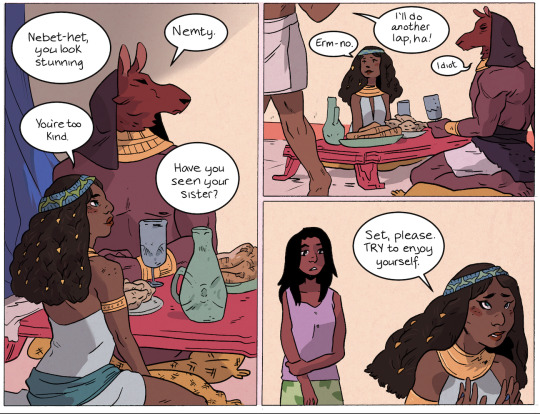
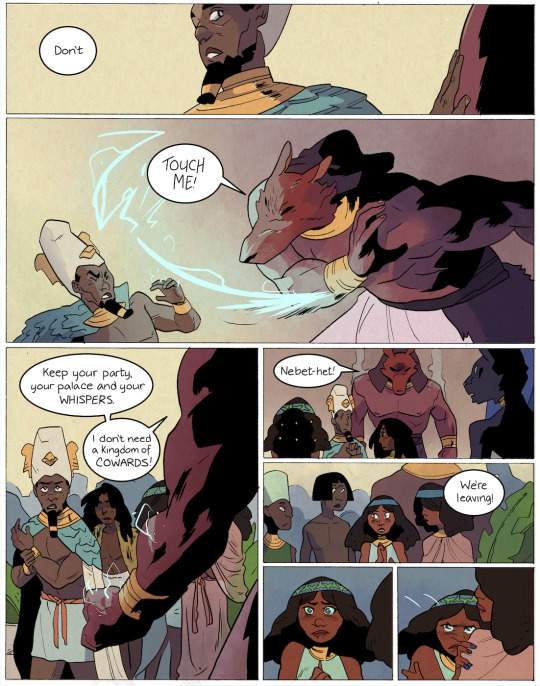

I'm Very Normal about Set as a character. ⚡️GODSLAVE⚡️ is an action/urban fantasy story, featuring a girl's journey into Egyptian mythology in the modern day.
Read from the beginning here⚡️⚡️
#egyptian gods#egyptian mythology#set#setesh#Osiris#nebethet#nephthys#mythology#deities#Egyptian deities#egyptology#webcomic#webcomics#comic#comics
599 notes
·
View notes
Text
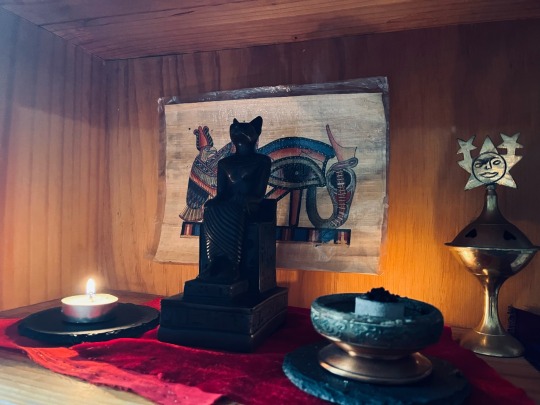
Ancient Egyptian Incense
Kyphi Tsa (incense) is an ancient Egyptian incense used in sacred ceremonies, often in temples but possibly available for home practice. It also smells amazing and I’ve been using it as a good standard incense offering for the Egyptian deities I sometimes work with. Recipes vary, but I found this one on a Geocities website from the early 2000s I can no longer find. I highly recommend it. THe following is copied word for word though. (I no longer make the balls but the rest I do exact.)
Kyphi Incense (Kyphi Tsa)
This recipe was reconstructed from ancient Egyptian papyrii. Although an ingredient or two may not have translated correctly, this should be pretty close to the actual incense used in Egyptian temples.
Amount (In Parts)Ingredients:
3/4 Honey3 Raisins1/4 Copal1/4 Myrrh1/4 Orris1 Sandalwood1/4 Storax1/2 Frankincense1/2 Cinnamon (REAL stuff only, and grind it forever)Red Wine (enough to moisten mixture)Benzoin (enough to roll balls in)
Thoroughly grind all ingredients separately, then mix together groups of ingredients by nature: resinous together, powdery together, etc. Finally, mix all batches together, add red wine to moisten, then roll into 5/8" balls and roll balls in benzoin. Lay out on waxed paper for a week or so, until firm.
CAUTION: Incense balls will look like donut holes. Be careful that folks know that these scrumptious looking balls of incense that you've left lying around are NOT edible!
The balls can be used when firm, but for best results, they should be allowed to cure a few weeks. Kyphi which I've had for two years is better than ever.
Photo is of my Bastet nook — if you choose to work with her, or indeed any deities, she demands full prostration during rituals — as in, on your knees, nose to the floor, arms out in front of you as you say your prayers and make requests. My friend and I had a partial apparition from Bastet the first time I worked with her, followed by a 10-minute downpour, in the middle of the day, and she is, to this day, one of my favourite deities allies on this Earth.
#witch community#witchblr#witch#deity#deity work#witchcraft#deity worship#altar#egyptian deities#bastet#sekhmet#god anubis#hathor#ma’at#thoth god#osiris#isis goddess#nefertiti#offerings#incense#recipes
25 notes
·
View notes
Text
It's been a good few months (give it three months) of me worshipping deities and I just LOVE LOVE LOVE THEM SO MUCH.
Like, no, seriously, I love them. Like, I don't mind almost going blind from being flash banged by Lord Apollon. I don't mind seeing birds flying around whenever I'm doubting myself because they remind me of Lord Hermes. And I don't mind walking past a house with tons of dogs looking at me from the inside after I had just prayed for Lord Anubis to send me a sign (like a stray dog) on the way home cause mental health is down the drain.
I don't mind struggling to do divination with Lord Apollon because Lord Hermes keeps popping right in. I don't mind being called out on my bullshit by my gods. I don't mind being told to stop being dependent and work on myself. I don't mind being reassured that I don't need to be strict and professional with them. And I don't mind being giggly when I talk to them.
Gods, I just love being a pagan and I love my Gods. I've been doing better because of this. If only I could express my spirituality freely in my house and give them proper altars. I would if only I could.
#hellenic pagan#hellenic polytheism#hellenic deities#hellenism#hellenic worship#apollon#hermes#greek gods#ancient egypt#egyptian deities#kemetism#anubis deity#anpu
25 notes
·
View notes
Text

Fritz Schwimbeck (1889–1972) - Totengericht (Judgment of the Dead)
505 notes
·
View notes
Text
Kemetic discord: Welcome to Per-Maat!
This is a Kemetic based educational server that’s open to people of all paths. We share resources, knowledge, personal experiences, and you’re more than welcome to share insight about your personal practice as well.
We would love it if you could come join us, and at least make some new friends!
#kemetic#kemetic paganism#kemetism#ancient egypt#egyptian mythology#ancient kemet#deity work#deity worship#egyptian gods#kemetic discord#discord#pagan religions#kemetic pagan#paganism#pagan#eclectic pagan#pagan community#kemetic religion#world religions#ancient religion#pagan discord#pagan gods#pagan deities#egyptian deities#kemet
56 notes
·
View notes
Text


Remade my offering candles to Isis.
Each of her candles now bears the ankh, handpainted in delicate, non-toxic gold. The ankh is the key to life itself. There are many depictions of Isis holding the key in her hand, symbolizing her significance as a deity of life. She has the ability to raise the dead, as she did with her husband Osiris. Beneath the key, a golden moon rests in silent reverence, alongside a single eye—an emblem of Isis’ ancient wisdom, her connection to the shifting lunar cycles, and her mastery over the mysteries of the universe.
#witchcraft#witchy things#hedgewitch#green witch#eclectic witch#altardecor#pagan wicca#forest witch#pagan witch#isis goddess#isis deity#egyptian deities#egyptian mythology
21 notes
·
View notes
Text

🐂Hathor🐂 Egyptian goddess of love, dance and renewal
#sketchbook#sketch#my art#fanart#art#paganism#goddess#egyptian mythology#kemetism#kemetic#hathor#egyptian deities#mythology
36 notes
·
View notes
Text









Lady Ma’at’s aesthetic
#fyp#fypシ#fypシ゚viral#fypage#fyppage#tumblr fyp#satanism#witchcraft#maat#ma’at#aesthetic#digital offering#egyptian deities#egyptian mythology
60 notes
·
View notes